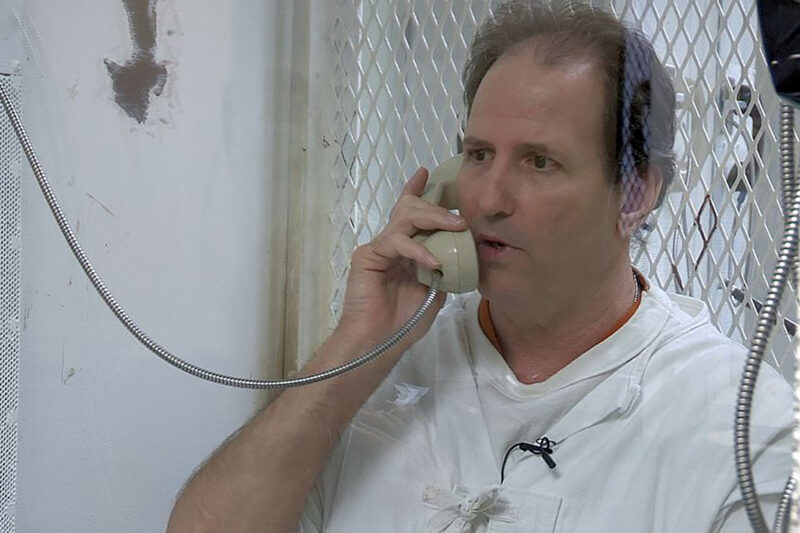
Many viewers of Netflix’s hit documentary series “Making a Murderer” report being sickened by the police’s treatment of 16-year-old Brendan Dassey, the ways in which the investigators manipulated Brendan’s emotions, memories, and imagination until he produced the fiction they wanted. I too felt ill — police in Texas put my client Max Soffar on death row using the same methods to draw out a false confession.
Now Max — innocent of the three murders for which he was sentenced — is dying behind bars from cancer in its final stage. With every visit, I’ve seen Max become horrifically gaunt, his eyes seeming to grow bigger and bigger.
Watching Brendan’s sessions with police gave me a window into Max’s interrogations, which have no video record. The police audio-recorded only two of 26 hours of interrogation, and the officers, not Max, typed up his statements. Despite the 27 years between them, Max and Brendan’s interrogations came from the same playbook.
Suspects who are young, have mental illnesses, have low intelligence, or are otherwise vulnerable are the most susceptible to making false confessions.
- Brendan was a 16-year-old special education student with an IQ near 70, placing him in roughly the lowest 5 percent of the population for intelligence. The police interrogated him without a parent present.
- Max was a brain-damaged 24-year-old who was well known by the police as having a brain “fried” from drug use and the mental capacity of a 10- or 11-year-old.
Deceptive kindness works in eliciting a false confession.
- When Brendan wasn’t coming up with the desired information, the police just kept gently coaxing him, pushing softly but relentlessly for the answers they wanted. Sometimes the officers acted like coaches consoling an injured athlete needing to sit out, reaching over to pat his knee and say encouragingly, “Come on, buddy. We’re in your corner.”
- When Max stopped answering questions and started asking for a lawyer during his interrogation, the officers left and sent in Sergeant Bruce Clawson from a nearby jurisdiction. Sgt. Clawson was Max’s “friend” who knew him as a wannabe informant and attention seeker.
Multiple interrogations over multiple hours lead to multiple inconsistencies proving the process unreliable
- The police conducted four formal interrogations of Brendan over hours, days, and weeks (and that doesn’t account for questioning likely done off camera). Under that pressure, he kept changing his story, as to whether he was involved in a plan to kill Teresa Halbach, what Steven said when he invited Brendan over, when they killed her, and on and on. The result was a mashup of inconsistent statements with facts that didn’t match.
- In Max’s case, the police took three different written statements from him over 26 hours on three different days, plus interviewed him at other times without any recording. Like Brendan’s statements, Max’s “confessions” clashed frequently with each other and with the known, credible evidence. In the first two statements, Max said he remained in the car while a “running buddy” went inside the bowling alley, while Max’s third statement said that both men went in and shot the victims. The surviving victim meanwhile contradicted Max’s third statement as to the number of perpetrators (one), what the perpetrator said, and so on. The only correct details to be found in Max’s statements had been widely published in the media.
These techniques produced false confessions that stood alone in each case as the only “evidence” the prosecution had. For both Max and Brendan, law enforcement had otherwise come up empty: no DNA, no eyewitnesses, no fingerprints, and no other physical or forensic evidence linked either of them to murder.
I know the nightmare will be over soon for Max one way or another. If it were just Max, I just might be able to wipe my tears and try to forget this horrific chapter in criminal justice. But the mentally challenged Brendan in belly chains on my TV screen and in his prison photo on my computer remind me that the innocent are still preyed upon. Indeed, of the 58 people who were exonerated in 2015 of murder, the National Registry of Exonerations found that 22 had been convicted based on false confessions.
Brendan faces 30 more years before he will be eligible for parole. Thankfully Wisconsin stands with the majority of states that no longer allow or carry out executions. But we must do more to prevent duplicitous interrogations and false confessions. In far too many parts of the country, police aren’t required to videotape their interrogations. Video didn’t save Brendan from prison, but that audio-visual evidence might yet get him out.
It’s not the videos alone, of course, that give Brendan’s case hope. Those tapes had to be scrutinized for hours on end in keeping with the research on false confessions. In addition to videos of all confessions, we must ensure that attorneys have the time and money to study them. Otherwise, the police, prosecutors, judges, and juries will continue to make a mockery of justice. We must stop punishing the innocent and vulnerable for crimes that aren’t their own.


